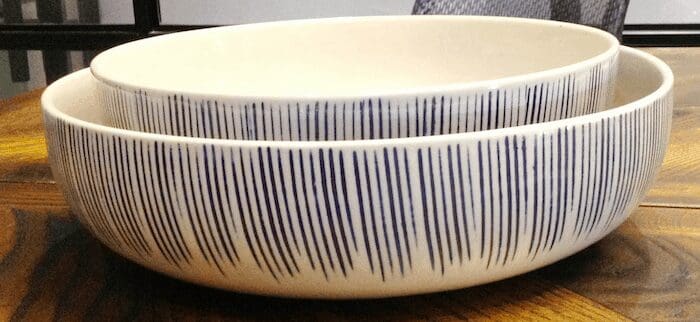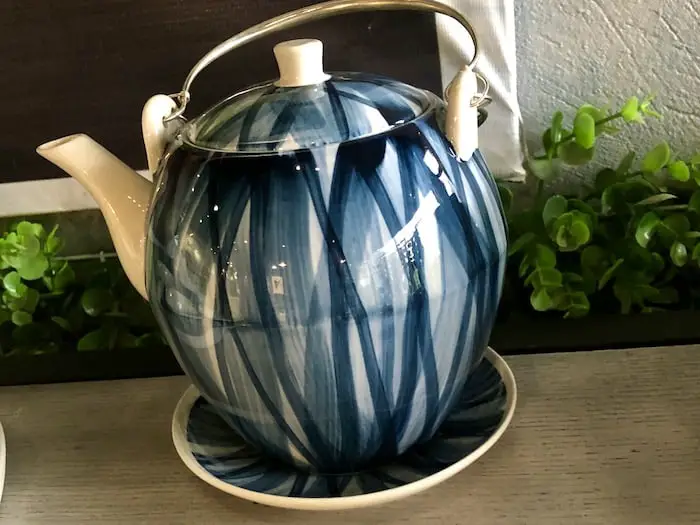Whenever anyone talks about earthenware, stoneware, and porcelain, there can be confusion about each material and how they are different. Each one has some similarities but also some unique differences.
Earthenware, stoneware, and porcelain are all made by various clays and then fired. The kind of clay used and the temperature they are fired can make a difference as to how soft or hard the actual end product is. Though they all seem to be similar, they are all very different materials and products.
Table of Contents
- Understanding the Differences: Earthenware, Stoneware, and Porcelain Materials
- Comparison Between Earthenware, Stoneware, and Porcelain
- Related Questions
Understanding the Differences: Earthenware, Stoneware, and Porcelain Materials
The world of ceramics encompasses a variety of materials, most notably earthenware, stoneware, and porcelain. While these materials are all crafted from different types of clay and undergo the process of firing, it’s the specific clay composition and firing temperatures that determine the final hardness and characteristics of each product. Despite their apparent similarities, earthenware, stoneware, and porcelain stand apart as distinct materials, each with unique properties and uses.

All About Earthenware
Earthenware is also a comprehensive term used for different kinds of objects made out of pottery.
The Oxford Dictionary defines earthware as:
“Pottery made of clay fired to a porous state which can be made impervious to liquids by the use of a glaze.”
Oxford Dictionary
Earthenware is a kind of pottery that can usually hold liquids when a glaze is applied to it. But what can get confusing here is that some earthenware may not have a glaze on it.
Earthenware is usually what clay building bricks are made out of. If you ever see an unglazed brick that has gotten wet, you can see that the water or liquid can soak into the brick. Earthenware is usually quite soft so that you can take a knife and you can scratch it.
Terracotta is a kind of earthenware. It is clay that can be glazed or unglazed, but the fired body is porous. This means it can also crack or break easily.
Thus, earthenware can also be fired at shallow temperatures, even as low as 600 C, or in a very primitive firing pit; other earthenware is usually fired at 1000 C.
Earthenware has been around for a long time. It has been found in Ancient Greek and Roman pottery and ancient East Asian and European pottery.
All About Stoneware
Stoneware is also an inclusive term that is used for pottery and other ceramics. It can get confusing as stoneware is generally not a term that is recognized in traditional East Asian pottery; the Oxford Dictionary defines stoneware as:
“A type of pottery which is impermeable and partly vitrified but opaque.”
oxford dictionary
Stoneware is a pottery that has been fired to hold liquids, but unlike glass, you can not see through it.
The Oxford Dictionary defines vitrified as:
“Convert (something) into glass or a glasslike substance, typically by exposure to heat.”
Oxford dictionary
There are five basic types of stoneware. Each of the stoneware categories is:
- Traditional Stoneware is a dense, usually inexpensive, opaque body that can be any color. When broken, it will break into a conchoidal or stony-looking fracture.
- Fine stoneware is made from raw materials that are carefully selected, prepared, and blended. It is usually used to produce tableware and art ware.
- Chemical Stoneware is a stoneware that is explicitly used in the chemical industry. The stoneware would be resistant to chemicals or other substances.
- Thermal Shock Resistant Stoneware has certain materials added to it to enhance the stoneware body’s thermal shock resistance.
- Electrical Stoneware is stoneware made specifically for use for electrical insulators.
All About Porcelain
Like earthenware and stoneware, porcelain is also a ceramic material made by heating clay at a high temperature. The porcelain material is fired at a higher temperature than the other two clays and techniques.
Kaolin is the main material that porcelain is made from and then mixed with other materials. Those other materials will be according to what kind of porcelain is being produced. Other raw materials used in porcelain include feldspar, ball clay, glass, bone ash, steatite, quartz, petuntse, and alabaster.
Many factories making porcelain will have their own recipes for the clay. How much of each of these materials they will put into the clay will depend on their own traditional recipe.
Porcelain is a relatively tough material and translucent compared to other kinds of pottery as earthenware or stoneware. There is vitrification that takes place when the clays are fired at these high temperatures.
Porcelain originated in China. That is why the name “China” is another name for porcelain. Porcelain has a long history in China, as it started production in 196 AD.
There are three kinds of porcelain known as hard-paste porcelain, soft-paste porcelain, and bone china. Here is the information about each of these types of porcelain:
- Hard-paste porcelain – Hard-paste porcelain is porcelain clay that is fired at 1400 degrees Celsius. This is used a lot in Japanese porcelain and much of the fine porcelain around the world.
- Soft-paste porcelain – Soft-paste porcelain is porcelain that is fired at 1200 degrees Celsius. Soft-paste porcelain is not as tough or hard as hard-paste porcelain.
- Bone- China – Bone china was originally developed in England to compete with the Chinese imported porcelain. Bone china is considered soft-paste porcelain that includes bone ash as one of its ingredients.
Comparison Between Earthenware, Stoneware, and Porcelain
Below is a chart that outlines the difference between earthenware, stoneware, and porcelain. As you can see from the chart, porcelain is fired at the highest temperature, and earthenware at the lowest.
| Earthenware | Stoneware | Porcelain | |
| Firing Temperatures | 1000C (1830F) to 1200C (2190F) | 1000C (2100F) to 1300C (2370C) | 1200C (2190F) to 1400 C (2550F) |
| Hardness | Can scratch and break | Resists Scratching | Very Hard to Scratch |
| Vitrified | No | Partly Vitrified | Vitrification |
| Clay Colors | Usually darker | Usually grey or brownish color | Usually White or Cream but there is Black Porcelain |
Even though many people may use the words earthenware, stoneware, and porcelain interchangeably, they are really very different kinds of pottery. Each of them has its own unique qualities and uses.
Find out more about how Mondoro can help you create, develop, and manufacture excellent home decor and furniture products – don’t hesitate to contact me, Anita. Check out my email by clicking here or become a part of our community and join our newsletter by clicking here.
Mondoro gives out a FREE Lookbook to anyone interested. You can receive a copy of our latest Lookbook by clicking here.
Listen to our Podcast called Global Trade Gal. You can find it on all major podcast platforms. Try out listening to one of our podcasts by clicking here.
Subscribe to our Mondoro Company Limited YouTube Channel with great videos and information by clicking here.
Related Questions
What is the PVD Stainless Steel Coating Used On Home Decor Products?
PVD coatings are a very thin, yet highly durable coating that can be placed on many different kinds of substrates, including stainless steel. A vacuum chamber with very high temperatures is used to apply the PVD coating. Though this finish is used a lot in the tech, medical, and aerospace industries, it is also used for home decor and home furniture products.
You can find out more about PVD by reading out blog What is the PVD Stainless Steel Coating Used On Home Decor Products? by clicking here.
What is the Brass and Bronze Material Used In Home Decor Products?
Brass and bronze are both copper alloys, but brass is copper and zinc, and the bronze material is copper and tin. They both look similar but have different properties and uses. When brass or bronze is made into home decor products many times they will be sand cast or use a lost wax or investment mold technique. Each of these production methods has different uses and prices that can affect the overall production.
You can find out more about brass and bronze by reading our blog What is the Brass and Bronze Material Used In Home Decor Products? by clicking here.


